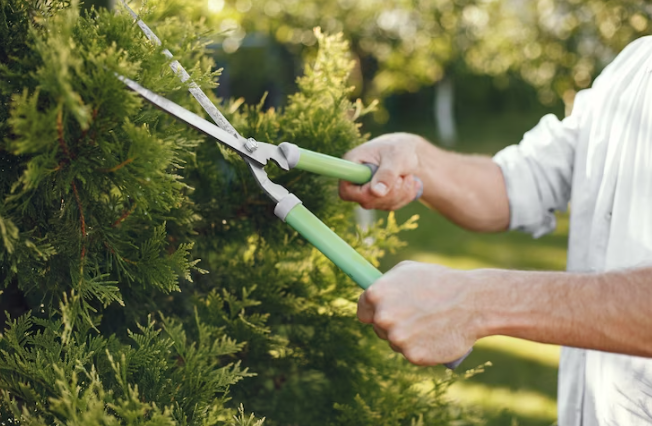If you’re starting with gardening, you might wonder what tools you need to do the job. While much attention is given to more extensive tools like shovels and hoes, every gardener needs one smaller tool in their kit: garden scissors. In this guide, you can take a closer look at what these scissors are, how they work, and how you can use them to keep your plants healthy and thrive.
Also known as pruning shears or secateurs, they are small, handheld cutting tools specifically designed for the garden. They come in various sizes, shapes, and styles, from basic bypass scissors to more advanced anvil and ratchet scissors. Most scissors have two sharp blades that can be squeezed together to cut through small branches, stems, and foliage.
Types
As mentioned, there are a few different scissors to choose from, each with its strengths and weaknesses. Bypass scissors, for example, have a scissor-like action that allows them to make clean cuts on small branches and stems. On the other hand, anvil scissors have a more powerful cutting action and are better for cutting through thicker branches. Ratchet scissors use a series of gears to make cutting more accessible and can be a good option for those with weaker hand strength.
How to use it?
Using garden scissors is relatively simple, but using them correctly is essential to avoid damaging your plants or injuring yourself. To begin, make sure your scissors are clean and sharp. It will ensure that your cuts are clean and precise and help reduce the risk of infection. When using scissors, it’s essential to position them at the right angle and to move them in a smooth, sweeping motion. It will help prevent tearing and make it easier to control the direction of your cuts.
When to Use it?
It can be used for various tasks, including pruning, shaping, and harvesting. Pruning is the most common use for scissors and involves removing dead or damaged branches and stems. Shaping involves trimming the plant to create a particular shape or design. Harvesting is gathering fruits, vegetables, or flowers from your plants.
Maintenance and Storage
To ensure that they last for many years, it’s essential to take good care of them. It means keeping them clean and dry, oiling them regularly, and storing them in a safe and dry place. It would help if you also sharpened your scissors regularly to ensure they remain sharp and effective. Most scissors can be sharpened using a sharpening stone or a honing file.
Safety Tips
When using scissors, taking certain safety precautions is essential to avoid injury. Always wear gloves to protect your hands, and keep your fingers away from the blades. It’s also a good idea to wear eye protection, especially when pruning or cutting larger branches. When you’re finished using them, store them safely and securely.
Scissors are an essential tool for any gardener, no matter their level of experience. They are versatile, easy to use, and help keep your plants healthy and looking their best. By choosing the right type of scissors for the task at hand, learning how to use them properly, and taking good care of them, you can ensure that your garden stays beautiful and thriving for years to come. With a bit of practice and attention to detail, you’ll be able to trim your plants and achieve the desired results quickly.
Thus, choosing the right type for the job is essential when using garden scissors. For example, pruning shears are ideal for cutting through thicker stems and branches, while snips are great for precision work and trimming delicate plants. Make sure you have the right pair of scissors for the task at hand, as using the wrong type of scissors can damage your plants and make the job more difficult.






